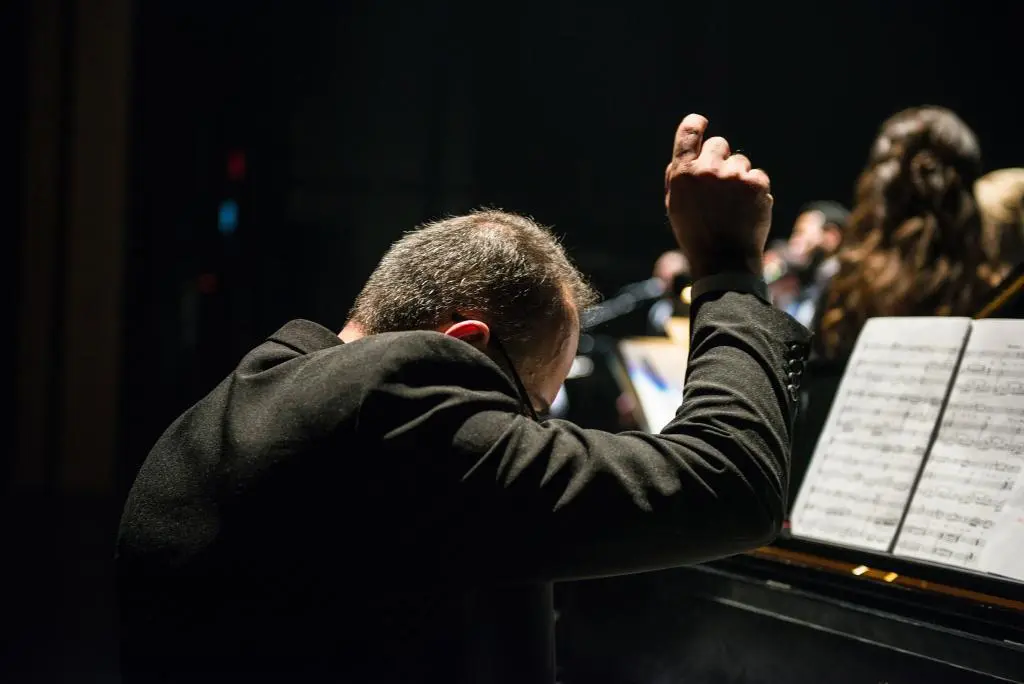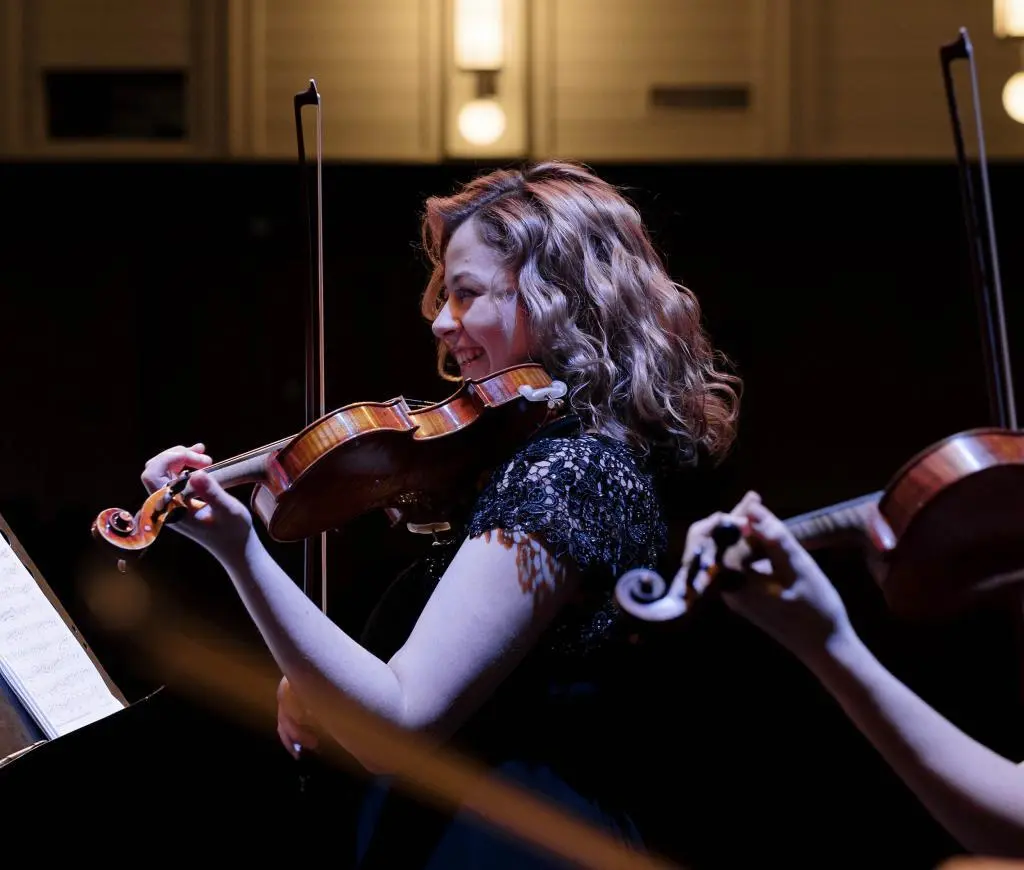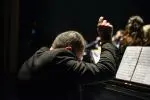In the realm of music, allegro is an Italian tempo marking that signifies a piece to be played “fast,” “lively,” or “cheerful.” It’s a directive that sets the rhythm, pace, and mood, acting as a guiding light for musicians and listeners alike.

What is Allegro: Table of Contents
Music, in its essence, is a language that transcends borders, cultures, and time. It speaks to the soul, evoking emotions and painting vivid images in the listener’s mind. At the heart of this musical tapestry lies the tempo, setting the pace and mood of a piece. And among the myriad of tempos, allegro stands as a testament to the vivacity and exuberance of music.
Originating from the Italian word meaning “joyful” or “lively,” allegro is more than just a tempo marking; it’s an emotion, a state of being. When a composer chooses to set a piece in allegro, they’re not merely instructing the musicians to play faster. Instead, they’re inviting the audience on a spirited journey, one filled with energy, enthusiasm, and often, joy.
Imagine a bustling Italian marketplace, with vendors calling out their wares, children laughing, and the distant sound of a street musician’s violin. The atmosphere is electric, vibrant, and full of life. That’s the essence of allegro. It’s the musical embodiment of life’s most animated moments.
But allegro’s significance in music isn’t just about speed. It’s about the character of the piece. It’s the difference between a gentle stroll through a serene garden and a lively dance in a bustling town square. Allegro pieces demand attention, pulling the listener into their dynamic world, making hearts race a little faster and spirits soar a little higher.
In the grand symphony of life, allegro plays a crucial role, reminding us of the joy of living, the thrill of movement, and the beauty of a moment fully embraced. As we journey deeper into the world of music, the magic of allegro becomes all the more enchanting, solidifying its place as the true heartbeat of musical expression.
The Italian Connection: Why Allegro?
Music, in its vast and intricate tapestry, often borrows from various cultures, weaving a story that’s as rich in history as it is in sound. One such influential culture is Italy, which has left an indelible mark on the world of music, especially when it comes to terminology. Let’s explore this connection further.
Tracing Back to Italy: The Birthplace of Musical Terminology
Italy, with its rich history of art, culture, and innovation, has been a beacon for creativity for centuries. The Renaissance period, which originated in Italy, saw a flourishing of arts and sciences, and music was no exception. During this era, musical notation evolved, and with it came the need for terms that could guide performers in interpreting the composer’s intent.
It’s no surprise then that many of the musical terms we use today, from “andante” to “vivace,” have their roots in the Italian language. Italy’s historical significance in shaping musical terminology is profound. The country’s contributions provided a standardized language for music, allowing compositions to be shared, understood, and performed consistently across borders.
Allegro Unveiled: What Does It Really Mean?
At the heart of this Italian musical lexicon lies the term “allegro.” Literally translating to “joyful” or “lively” in English, allegro in a musical context is so much more. It’s not just about playing a piece quickly; it’s about capturing a specific mood and energy. When a piece is marked “allegro,” it beckons the performer to infuse the composition with a certain zest and vivacity.
But beyond its literal translation, allegro embodies the spirit of joy and liveliness that is often associated with Italian culture itself. Think of the vibrant streets of Rome, the lively festivals of Venice, or the spirited dances of Sicily. Allegro, in many ways, is a reflection of Italy’s soul – passionate, vibrant, and full of life.

Allegro vs. The World: Comparing Musical Tempos
Music, in its infinite beauty, has a rhythm and pace that can evoke a myriad of emotions. From the slow, melancholic strains of a ballad to the rapid beats of a dance track, tempo plays a pivotal role in shaping our musical experience. Within this vast tempo landscape, where does “allegro” stand, and how does it compare to its tempo counterparts?
The Speed Spectrum: From Largo to Presto
The world of musical tempos is as varied as the colors of a rainbow. At one end, we have the serene and slow-paced “largo,” evoking images of a calm sea or a tranquil evening. Progressing along the spectrum, we encounter tempos like “andante” (a walking pace) and “moderato” (moderate). As we move further, we approach the lively realm where “allegro” resides.
Allegro, with its brisk and spirited nature, is often the heartbeat of many compositions, infusing them with energy and vivacity. However, it’s not the fastest tempo on the block. Beyond allegro lies “vivace” (lively and fast) and the whirlwind speed of “presto,” reminiscent of a racing heartbeat or a swift gust of wind.
Understanding this spectrum is crucial. It allows us to appreciate how allegro fits into the broader musical landscape, offering a tempo that’s neither too slow nor too fast but just the right amount of liveliness.
Allegro and its Siblings: Allegretto & Molto Allegro
In the musical family, allegro has some close relatives that share its zest but come with their own unique flavors. Two such tempos are “allegretto” and “molto allegro.”
Allegretto, often considered the younger sibling, is slightly slower than allegro. It carries a cheerful disposition but is more restrained, like a gentle jog compared to allegro’s spirited run. On the other hand, molto allegro is allegro’s enthusiastic elder, pushing the boundaries of speed. “Molto” translates to “very,” so when paired with allegro, it amplifies the tempo, making it faster and more intense.
These subtle differences and nuances between allegro and its siblings highlight the richness of musical tempos. While they might share similarities, each has its own identity, shaping music in distinct and memorable ways.

BPM: The Heart Rate of Allegro
In the intricate dance of music, every note, pause, and crescendo plays a part. But beneath these layers, there’s a consistent rhythm, a pulse that keeps the music alive and flowing. This pulse, often measured in beats per minute or BPM, is the heartbeat of any musical piece. And when it comes to allegro, BPM becomes the very essence that defines its lively spirit.
Decoding BPM: Why Beats Per Minute Matter?
Just as our heart rate can indicate our mood or activity level, BPM serves as the heartbeat of a musical composition, setting its pace and energy. BPM, which stands for Beats Per Minute, is a unit that measures the tempo of a song by counting the number of beats in one minute. It’s a way to quantify the speed and rhythm, providing musicians and listeners with a clear understanding of how fast or slow a piece should be played.
But why is BPM so crucial? Imagine listening to a lullaby at the speed of a rock anthem or vice versa. The essence of the song would be lost, and the emotions it’s meant to evoke would change drastically. BPM ensures that the musical intent of the composer is preserved and conveyed accurately, allowing the piece to resonate with its audience as intended.
Allegro in Action: Typical BPM Ranges
Allegro, with its lively and brisk nature, occupies a specific range on the BPM spectrum. Typically, allegro pieces fall within the BPM range of 120 to 156. This range ensures that the music retains its energetic and joyful character, making listeners feel uplifted and invigorated.
However, music is ever-evolving, and so are its classifications. Within the broad umbrella of allegro, there are sub-genres and variations. For instance, “allegretto,” often considered a slightly slower version of allegro, might have a BPM ranging from 105 to 120. On the other hand, “molto allegro,” which amplifies the speed of allegro, can go beyond 156 BPM, approaching the realms of “presto.”
The Emotional Essence of Allegro
Music has the unparalleled ability to touch our souls, evoke memories, and stir emotions deep within us. Among the myriad of musical tempos, allegro stands out, not just for its brisk pace but for the vibrant emotions it encapsulates. Delving into the world of allegro is akin to embarking on a journey through a spectrum of joy, cheerfulness, and vivacity.
Joy, Cheerfulness, and Liveliness: The Mood of Allegro
At its core, allegro is more than just a tempo marking; it’s an emotional directive. When composers choose allegro, they’re not merely setting a pace; they’re painting a canvas of emotions. Allegro infuses a piece with a sense of joy, a dash of cheerfulness, and a whole lot of liveliness. It’s the musical equivalent of a sunny day, a hearty laugh, or a spirited dance.
Imagine a piece marked allegro. As the first notes play, there’s an immediate sense of upliftment. The notes seem to dance, the melodies exude happiness, and the rhythms pulsate with life. This is the magic of allegro. It has the power to transform a simple tune into a jubilant celebration, making listeners feel as if they’re part of a grand, joyous occasion.
Why Does Allegro Feel So Uplifting?
The uplifting nature of allegro isn’t just a musical phenomenon; it’s deeply rooted in our psychology and physiology. Fast tempos, like those in allegro pieces, have been shown to stimulate the brain, releasing endorphins – the body’s natural feel-good chemicals. This results in feelings of happiness, increased energy, and a sense of well-being.
Furthermore, from a psychological perspective, faster tempos often mirror our heart rates during moments of excitement or happiness. Listening to allegro music can evoke memories of joyful times or inspire feelings of optimism and positivity. It’s akin to the rush one feels when dancing, celebrating, or simply being in a moment of pure elation.
Indicating Allegro in Musical Scores
The world of music is a vast canvas, where every note, rest, and symbol carries a specific meaning. Among these symbols, tempo markings play a pivotal role, guiding musicians on how to interpret and perform a piece. Allegro, with its lively spirit, is one such tempo marking that composers use to convey a specific mood and pace. But how is this energetic tempo represented in musical scores, and what happens when there’s a need for change during a performance?
The Composer’s Intent: Marking Allegro on Sheets
When a composer envisions a piece to be played with a brisk and lively tempo, they turn to the term “allegro.” Typically, allegro is indicated at the very beginning of a musical score, right after the clef and the key signature, and before the time signature. This placement ensures that the musician is aware of the intended tempo from the outset.
The word “allegro” is usually written in italics and is placed above the staff. Sometimes, to provide more clarity, composers might also include the beats per minute (BPM) indication, such as “Allegro (120-156 BPM).” This gives musicians a more precise understanding of the speed at which the piece should be played.
Fluidity in Tempo: Adjusting Allegro Mid-Performance
Music, in its essence, is dynamic and ever-evolving. Even within a piece marked allegro, there might be moments where the composer desires a change in tempo. This is where terms like “accelerando” and “ritardando” come into play.
“Accelerando”, often abbreviated as “accel.,” instructs the musician to gradually increase the tempo. In the context of an allegro piece, this could mean moving from a lively pace to an even more spirited one, adding intensity and excitement to the performance.
Conversely, “ritardando”, often seen as “rit.,” signals a gradual decrease in tempo. Even in a piece marked allegro, there might be moments of reflection or a brief respite, where the music slows down before picking up the pace again.
These tempo adjustments, whether to speed up or slow down, add depth and dimension to a performance. They allow for moments of anticipation, surprise, and emotion, ensuring that the music remains engaging from start to finish.
Allegro Across Genres: A Universal Tempo?
The beauty of music lies in its universality. Across eras, cultures, and genres, certain elements remain consistent, resonating with audiences of all backgrounds. One such element is the tempo, and within this realm, the lively spirit of allegro shines brightly. Whether it’s the grandeur of classical symphonies or the pulsating beats of modern tracks, allegro finds its place, proving its versatility and timeless appeal.
Classical Elegance: Allegro in Symphonies and Sonatas
The classical music era, spanning from the 17th to the early 20th century, witnessed the birth and evolution of some of the world’s most iconic compositions. Within this rich tapestry, allegro emerged as a favored tempo, infusing pieces with energy and vivacity.
One of the most renowned examples is Beethoven’s Symphony No. 5. Its iconic four-note motif, played in an allegro tempo, is instantly recognizable and has become synonymous with classical grandeur. Similarly, Mozart’s Sonata No. 16 in C Major begins with an allegro movement, setting a lively and spirited tone for the entire piece.
These compositions, among countless others, highlight the significance of allegro in classical music. It’s not just a tempo marking but an embodiment of the era’s zest for life, exploration, and expression.
Modern Beats: Allegro’s Presence in Contemporary Music
As music evolved, branching out into diverse genres, the essence of allegro seamlessly transitioned into contemporary sounds. While the instruments, rhythms, and melodies might differ, the underlying spirit of allegro remains consistent.
In the world of jazz, for instance, allegro tempos often back upbeat tracks, driving the improvisational solos and intricate rhythms that the genre is known for. Think of the lively beats of Duke Ellington’s “Take the ‘A’ Train” or the brisk pace of Charlie Parker’s “Ornithology.”
Pop and rock genres, too, have embraced allegro. Songs like “Twist and Shout” by The Beatles or “Walking on Sunshine” by Katrina and the Waves exude an allegro energy, making listeners want to dance and sing along.
Even in electronic and hip-hop tracks, the essence of allegro can be felt. Whether it’s the fast-paced beats of a dance anthem or the energetic flow of a rap verse, allegro’s influence is undeniable.
FAQs: Addressing the Curiosities Around Allegro
The world of music is vast and intricate, and with its depth comes a plethora of questions, especially when delving into specific elements like tempo markings. Allegro, with its lively spirit, often piques the curiosity of both seasoned musicians and casual listeners. Let’s address some of the most frequently asked questions surrounding this vibrant tempo.
Is Allegro Always Fast?
At its core, allegro signifies a brisk and lively tempo. However, “fast” is a relative term in music. While allegro is undoubtedly faster than tempos like “adagio” or “largo,” it’s not as rapid as “presto” or “vivace.” It’s essential to understand that allegro provides a piece with a sense of energy and vivacity, but its exact speed can vary based on the composer’s intent and the specific context within a composition. So, while allegro is generally considered fast, it offers a balanced pace that’s neither too slow nor excessively rapid.
How Do Musicians Practice Allegro Pieces?
Practicing an allegro piece requires a blend of technical proficiency and emotional understanding. Musicians often start by breaking the piece down into smaller sections, allowing them to focus on intricate passages or challenging rhythms. Initially, they might practice at a slower tempo to ensure accuracy and clarity in each note. As they become more familiar with the piece, they gradually increase the speed, working their way up to the desired allegro tempo.
Metronomes are invaluable tools in this process, helping musicians maintain a consistent pace. Additionally, repeated practice, coupled with active listening to recordings or live performances, aids in capturing the true essence of allegro, ensuring that the piece is played with both precision and passion.
Can Allegro Be Used in Sad or Melancholic Pieces?
While allegro is often associated with joy, cheerfulness, and energy, music is a realm of endless possibilities. Emotions in music are multi-dimensional, and a brisk tempo doesn’t necessarily equate to happiness. A composer might choose an allegro tempo for a melancholic piece to convey a sense of urgency, turmoil, or restless longing. The rapid pace could mirror a racing heart, a mind filled with swirling thoughts, or a soul grappling with intense emotions.
In such instances, the melodies, harmonies, and instrumentation play pivotal roles in conveying the intended mood. So, while it might be less common, allegro can indeed be employed in sad or melancholic pieces, showcasing the versatility and depth of this tempo marking.
In the end, allegro, like all musical elements, serves as a tool for expression. Its interpretation and application are as varied and unique as the composers and musicians who embrace it.
What’s the Difference Between Allegro and Other Tempo Markings?
Allegro is just one of many tempo markings used in music. While it denotes a lively and brisk pace, other markings like “andante” signify a walking pace, and “adagio” indicates a slow tempo. Each tempo marking serves a unique purpose, guiding musicians on how to interpret a piece and helping listeners set their emotional expectations.
Are There Cultural Variations in Understanding Allegro?
Music is a universal language, but cultural nuances can influence its interpretation. In some cultures, allegro might be perceived as extremely fast, while in others, it might be seen as moderately brisk. These cultural variations enrich the global tapestry of music, adding layers of depth and diversity to the universal understanding of allegro.

